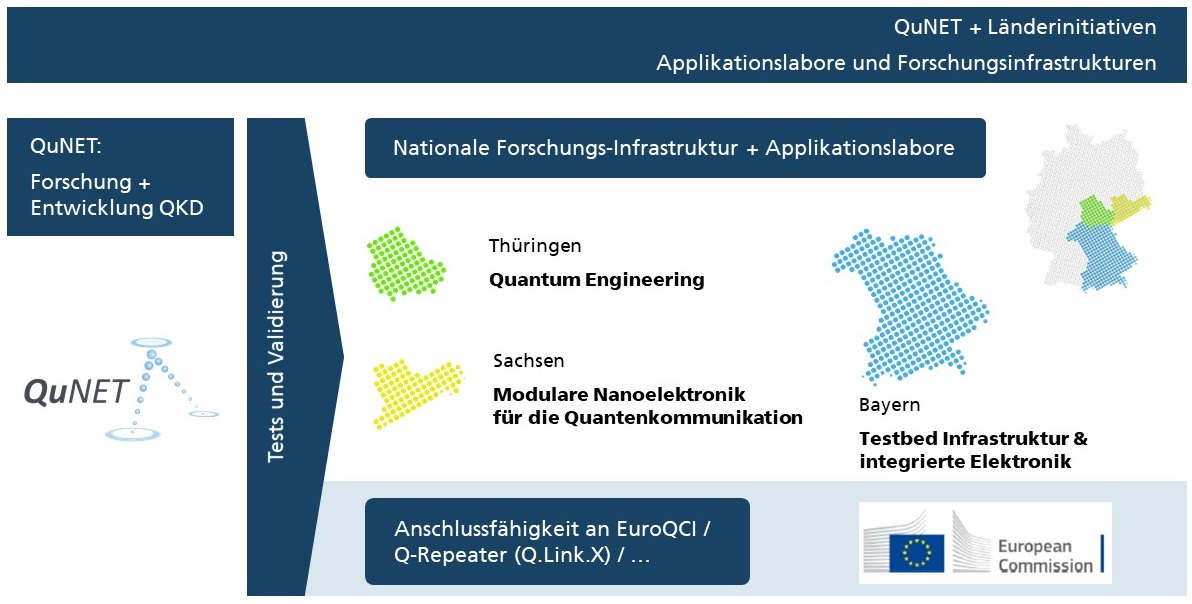The partners of the Center of Excellence Photonics have already successfully acquired a large number of high-profile research projects and initiatives. Some projects or initiatives stand out in particular, e.g. due to the uniqueness of the cooperation, the excellence of the research approach, or their national prominence. At this point, we would like to highlight the QuNET initiative from among the many projects, as it combines these three special features in one research initiative.
Highlight project: QuNET
The laws of quantum physics enable information security to be raised to an unprecedented new level. The technology of quantum key distribution (QKD) enables the exchange of digital information via public channels, while the confidentiality of communication can be guaranteed in a physically measurable way.
 Quantum research at the Center of Excellence in Photonics in Jena, Germany
Quantum research at the Center of Excellence in Photonics in Jena, Germany